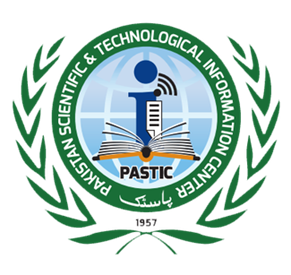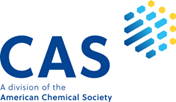Nanotechnology: Revolutionizing Cancer Diagnosis and Treatment
Early Cancer Detection and Treatment
DOI:
https://doi.org/10.69750/dmls.01.01.032Keywords:
Nanotechnology,Cancer,Diagnosis,TreatmentAbstract
Nanotechnology: Revolutionizing Cancer Diagnosis and Treatment
The creation of nanotechnology marks a pivotal transformation within the landscape of cancer diagnosis and treatment. As we stand getting ready to this technological revolution, the potential of nanotechnology to significantly beautify the precision, efficiency, and effectiveness of most cancers care is becoming increasingly evident[1]. This editorial explores the profound impact nanotechnology is having on most cancers analysis and treatment, highlighting key improvements and their implications for the future of oncology[2].
The Promise of Nanotechnology in Cancer Care
Nanotechnology, the science of manipulating materials at the atomic and molecular scale, has opened new frontiers in medication, particularly in oncology. Its capacity to interact with organic structures at the mobile and molecular degrees lets in for unparalleled precision in diagnosing and treating most cancers. Nano-enzymes, nanoparticles, and nanocarriers are most of the modern tools being advanced and deployed to combat cancer more correctly.
Enhancing Cancer Diagnosis
Traditional most cancers diagnostic methods frequently be afflicted by obstacles in sensitivity and specificity, leading to delayed detection and suboptimal remedy outcomes. Nanotechnology addresses these demanding situations via allowing the development of relatively touchy diagnostic gear that could detect cancer at its earliest stages. For example, nanoparticles may be engineered to target particular cancer biomarkers, imparting extra correct and early detection as compared to traditional imaging strategies[3, 4].
Biosensors incorporating nanoparticles have proven exceptional efficacy in detecting trace levels of cancer-associated biomolecules in physical fluids, facilitating non-invasive and fast analysis. This early detection is essential for enhancing prognosis and survival rates, because it lets in for timely intervention and treatment[5].
Revolutionizing Cancer Treatment
Nanotechnology's effect on cancer remedy is equally transformative. One of the maximum massive improvements is the improvement of focused drug delivery structures. Traditional chemotherapy, while powerful, regularly consequences in intense aspect effects due to its non-particular nature, affecting each cancerous and healthy cell. Nanoparticles may be designed to supply chemotherapeutic sellers without delay to tumor cells, minimizing harm to healthy tissue and lowering aspect consequences[6]. Moreover, the particular houses of nanoparticles, which include their size, surface place, and functionalization capacity, allow for the controlled release of therapeutic retailers. This guarantees that the drug attention remains in the therapeutic window for an extended period, enhancing its efficacy and decreasing the frequency of administration[7].
Emerging Therapies and Innovations
Recent research has established the potential of nanotechnology in developing novel cancer healing procedures. For example, nano-enzymes have shown promise in improving the effectiveness of radiotherapy via growing the sensitivity of tumor cells to radiation. Additionally, nanotechnology is facilitating the improvement of immunotherapies, wherein nanoparticles are used to modulate the immune gadget's response to most cancers cells, improving the body's herbal potential to fight most cancers[8].Furthermore, the combination of nanotechnology with different rising fields, such as artificial intelligence and personalised medication, is paving the way for the next technology of most cancers’ treatments. AI algorithms can analyse substantial datasets to identify patterns and expect responses to nanotechnology-based totally cures, enabling customized treatment plans tailored to character sufferers' genetic and molecular profiles[9].
Challenges and Future Directions
While the ability of nanotechnology in most cancers care is sizeable, numerous demanding situations stay. Ensuring the safety and biocompatibility of nanoparticles is paramount, as their lengthy-time period outcomes on the human frame aren't but absolutely understood. Regulatory frameworks want to adapt to hold pace with those improvements, making sure that new nanotechnology-based treatments are thoroughly evaluated for safety and efficacy[9, 10].Future research needs to cognizance on overcoming those challenges and expanding the packages of nanotechnology in cancer care. Interdisciplinary collaborations among oncologists, nanotechnologists, and regulatory our bodies will be important in translating these innovations from the lab to the clinic[11, 12].
CONCLUSION
Nanotechnology is certainly revolutionizing cancer analysis and remedy, presenting new hope for patients and remodelling the landscape of oncology. As we hold to discover and harness the capacity of this cutting-edge generation, the dream of greater powerful, less invasive, and customized most cancers care is turning into a reality. The ongoing advancements in nanotechnology promise to not simplest improve patient results but also pave the manner for a destiny in which most cancers are a doable, and possibly even curable, circumstance.
Downloads
References
Ingle AP, Golińska P, Yadav A, Razzaghi‐Abyaneh M, Patel M, Patel R, et al. Nanotechnology: a new era in the revolution of drug delivery, diagnosis, and treatment of diseases. Nanobiotechnology in diagnosis, drug delivery, and treatment. 2020:1-24.
Nasir A, Khan A, Li J, Naeem M, Khalil AA, Khan K, et al. Nanotechnology, a tool for diagnostics and treatment of cancer. Current topics in medicinal chemistry. 2021;21(15):1360-76.
Jia J, Wu X, Long G, Yu J, He W, Zhang H, et al. Revolutionizing cancer treatment: Nanotechnology-enabled photodynamic therapy and immunotherapy with advanced photosensitizers. Frontiers in Immunology. 2023;14:1219785.
Shuja A, Abubakar M, SHAHBAZ MN, Shahid SS, Khosa MM. ROLE OF NANO ENZYME IN DIAGNOSIS, PROGNOSIS AND TREATMENT OF GASTROINTESTINAL TRACT (GIT) CANCER. DEVELOPMENTAL MEDICO-LIFE-SCIENCES. 2024;1(1).
Umapathy VR, Natarajan PM, Swamikannu B. Review of the role of nanotechnology in overcoming the challenges faced in oral cancer diagnosis and treatment. Molecules. 2023;28(14):5395.
Kher C, Kumar S. The application of nanotechnology and nanomaterials in cancer diagnosis and treatment: A review. Cureus. 2022;14(9).
Li J, Zhu L, Kwok HF. Nanotechnology-based approaches overcome lung cancer drug resistance through diagnosis and treatment. Drug Resistance Updates. 2023;66:100904.
Rafiq Z, Patel P, Kumar S, Sofi HS, Macossay J, Sheikh FA. Advancements of Nanotechnology in Diagnostic Applications. Application of Nanotechnology in Biomedical Sciences. 2020:1-15.
Brar B, Ranjan K, Palria A, Kumar R, Ghosh M, Sihag S, et al. Nanotechnology in colorectal cancer for precision diagnosis and therapy. Frontiers in Nanotechnology. 2021;3:699266.
Hajjafari A, Sadr S, Rahdar A, Bayat M, Lotfalizadeh N, Dianaty S, et al. Exploring the integration of nanotechnology in the development and application of biosensors for enhanced detection and monitoring of colorectal cancer. Inorganic Chemistry Communications. 2024:112409.
Malik S, Muhammad K, Waheed Y. Emerging applications of nanotechnology in healthcare and medicine. Molecules. 2023;28(18):6624.
Deng Y, Zhou C, Fu L, Huang X, Liu Z, Zhao J, et al. A mini-review on the emerging role of nanotechnology in revolutionizing orthopedic surgery: challenges and the road ahead. Frontiers in Bioengineering and Biotechnology. 2023;11:1191509.






















